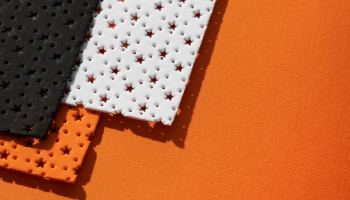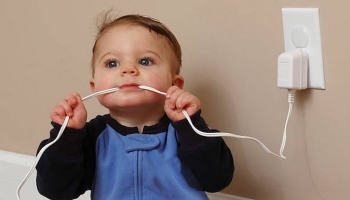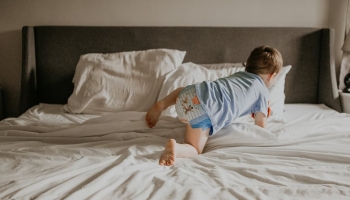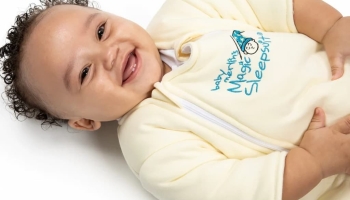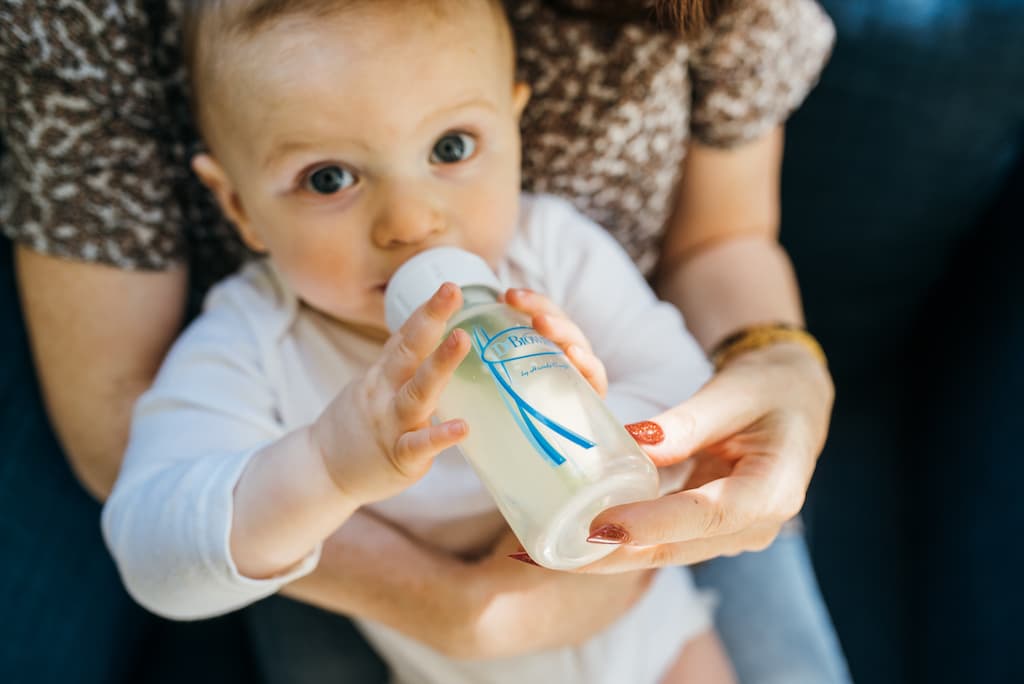
Keeping your baby’s bottle warmer clean is important for keeping your baby healthy and ensuring the warmer works properly. Sometimes, though, cleaning it can feel overwhelming because it gets used a lot and has a lot of parts. But don’t worry! This guide is here to help. We’ve broken down the cleaning process into easy steps to keep your bottle warmer in great shape without any hassle. You’ll be set to keep your baby happy and healthy by following these instructions.
Step-by-Step Cleaning Process
Keeping the bottle warmer clean helps stop bad germs like bacteria and mold from growing, which can make your baby sick. Regular cleaning removes milk residue that can become a breeding ground for these nasty germs, ensuring every bottle remains safe for your little one to drink. It’s like ensuring the place where you warm your baby’s milk stays safe and clean for them to drink.
There are different cleaning schedules for your bottle warmer. You should clean it daily to keep it fresh, maintain hygiene, and prevent immediate buildup. You must also give it a deeper clean once a month to eliminate any stubborn dirt or buildup, target deeper residue and mineral or limescale deposits. Both routines help to keep your baby healthy and happy.
The following steps are how to clean your Dr. brown bottle warmer.
Daily Cleaning
- Step 1: Unplug and cool down
- Start by unplugging the bottle warmer and allowing it to cool down completely. This prevents any accidents with electricity and avoids burns.
- Step 2: Remove the water reservoir
- Find the water reservoir at the back or side of the warmer. Take it out carefully, following the instructions. Then, empty any water left inside.
- Lay the removable water reservoir on a towel or set it on a surface to keep the water from spilling.
- Use mild, soapy water to clean the bottle warmer. Avoid harsh solvents on the appliance; they will damage it.
- Step 3: Empty the heating chamber
- Tilt the bottle warmer to drain any water from the heating chamber. This ensures there’s no leftover liquid inside.
- Step 4: Wash the basket
- Wash the basket by hand using hot, soapy water. Make sure to clean it well, especially in tricky spots where milk residue might hide.
- Alternatively, you can use the dishwasher on a gentle cycle. The plastic holder for the bottle or baby food container is dishwasher safe. For convenience, you can put it on the top rack with your other dishes.
- Placing the basket on the dishwasher’s bottom rack may cause it to get dislodged or damaged due to the spray force.
- Put the basket on a thick towel to air dry.
- Step 5: Wipe down the bottle warmer
- Use a damp cloth to wipe down the outside of the warmer, including the heating chamber. Avoid putting the appliance underwater to prevent damage. Be thorough in removing any spills or stains.
- Step 6: Rice and water cleaning
- After you let the reservoir soak for approximately 5 minutes, pour out all of the soapy water. Then, add roughly 2 tablespoons (24g) of uncooked, non-instant rice and 1 tbsp (15ml) of water. The measurements for the rice and water do not have to be exact.
- Since the fill hole on the reservoir is small, you may need to use a funnel. Alternatively, you can create a makeshift funnel by rolling a piece of paper into a cone shape.
- Do not use cooked rice; it gets mushy and can get stuck in the reservoir, causing bacteria and mold growth.
- Cover the fill hole on the reservoir with one finger and shake vigorously back and forth. Tilt the reservoir in different directions while shaking to ensure the rice reaches every part inside.
- The movement of the rice and water will help break up and eliminate any lingering soap residue from the reservoir’s interior.
- Even though the water in the reservoir isn’t used to prepare the bottle, failing to clean it thoroughly may result in steam leaving soap residue on the outside of the bottle, including the nipple.
- Dispose of the rice and water from the reservoir, then rinse the container under running water multiple times. Optionally, fill the reservoir halfway with water and repeat the shaking motion used with the rice.
- If you notice excessive suds remaining in the reservoir, add more rice and cold water and shake the container more vigorously before rinsing again.
- Shake out as much water as possible from the reservoir.
- Step 7: Air dry and reassemble
- Place the reservoir and warming basket on the towel and allow both to air dry for at least an hour. The inside of the reservoir does not have to be completely dry; ensure that all the external parts are completely dry before putting the warmer back together.
- To reattach the reservoir, slide it back into its slot on the right side of the warmer. You can leave the basket out until needed or place it inside the warming chamber.
- It’s recommended to clean your Dr. Brown’s bottle warmer daily or anytime you notice an odor coming from the reservoir.
Monthly Cleaning (every 4 weeks)
- Step 1: Descale your bottle warmer
- Over time, minerals in hard water can create limescale deposits inside your appliance. Running white vinegar through the warmer helps dissolve this buildup.
- Or use a descaling solution recommended by the manufacturer to remove mineral deposits. Descaling keeps your warmer working properly.
- If your warmer stops working as it should, it may need to be descaled to remove the accumulated limescale.
- Step 2: Unplug and cool down
- Unplug the warmer and let it cool down completely before cleaning to stay safe.
- Wait at least another 30 minutes before you start to clean.
- Step 3: Empty the heating chamber
- Remove the removable water reservoir from the right side of Dr. Brown’s bottle warmer and empty it.
- Tilt the warmer so the reservoir chamber faces up to empty any water inside, just like in daily cleaning.
- Step 4: Pour vinegar
- Mix 2 ounces (50 ml) of white vinegar and 4 ounces of cold water and pour directly into the reservoir. Vinegar helps dissolve mineral deposits and sanitizes the warmer because of its high acidity; it is safe and effective for use. You can use a shot glass, and it holds 2 ounces.
- Step 5: Warm the mixture
- Reinsert the reservoir, then plug in the bottle warmer. Run it through regular warming cycles with the vinegar mixture until the reservoir empties.
- You can use your usual warming cycle settings to avoid reprogramming. If you want a faster process, you can increase the temperature.
- Step 6: Rinse the warmer
- After descaling, unplug the warmer and rinse the reservoir with clean water several times to remove any white vinegar. Let it air dry completely.
- Step 7: Run it again
- Once dry, plug in the warmer and run warming cycles with clean water to ensure all the vinegar is gone. seeing bubbles means it’s clean and ready to use.
- Repeat the descaling process if you don’t observe bubbles until they appear.
Following these steps for monthly cleaning keeps your warmer in top shape, providing safe and efficient heating for your baby’s bottles.
Don’ts of Cleaning Dr. Brown’s Bottle Warmer
- Don’t submerge the warmer in water: Submerging it can damage its electrical components and pose a safety risk.
- Don’t use abrasive cleaners or scrubbers: Abrasive cleaners or scrubbers can scratch the surface of the warmer, potentially causing damage and making it more difficult to clean in the future.
- Don’t use harsh solvents: Harsh chemicals can degrade the materials of the warmer and leave behind harmful residues that may come into contact with your baby’s bottles. Use mild soap and rinse thoroughly.
- Don’t clean the warmer plugged in: It can cause electrical shock.
- Do not add cooked rice: Use uncooked, non-instant rice. Cooked rice will only mess up the reservoir from the inside, and cleaning will be hard.
Conclusion
Regular cleaning and descaling of Dr. Brown’s bottle warmer is essential for maintaining hygiene and prolonging its lifespan. Parents are encouraged to integrate these cleaning practices into their routine so you can ensure your baby’s health and the efficient operation of the warmer. It becomes easier with practice.
Frequently Asked Questions
How do you clean the inside of a Dr Brown’s bottle warmer?
To clean the inside of Dr. Brown’s bottle warmer, unplug it and let it cool down. Remove any water from the reservoir and wipe the interior with a damp cloth. Use mild, soapy water and rinse thoroughly with clean water and air dry. Regular cleaning ensures efficient and hygienic operation. Refer to manufacturer instructions for specific guidance.
Is Dr Brown’s bottle warmer safe for breast milk?
Yes, Dr. Brown’s bottle warmer is safe for warming breast milk. It is designed to gently and even heat, preserving the nutrients in breast milk while ensuring it reaches a safe temperature for consumption by your baby. The breast milk warmer ensures uniform and consistent heating, adhering to CDC and USDA guidelines. This approach optimally preserves the nutrients present in milk and formula.
How hot does Dr Brown’s bottle warmer get?
Dr brown’s bottle warmer typically heats baby bottles to approximately 98.6°F (37°C), which is around body temperature. It’s engineered to warm bottles gently and uniformly, ensuring the contents are heated safely for your baby.
Should you boil Dr Brown bottles?
Dr Brown recommends you sterilize bottle-feeding equipment using boiling, chemical/sterilizing solution, or electric/microwave sterilizers, following the manufacturer’s instructions. Preferably use Dr. Brown’s Microwave or Electric Sterilizet. Take care with steam to avoid burns. Keep components out of children’s reach. Wash hands before handling sterilized items. Avoid excessive handling. Remove the wire cleaning brush before sterilizing or microwaving.


